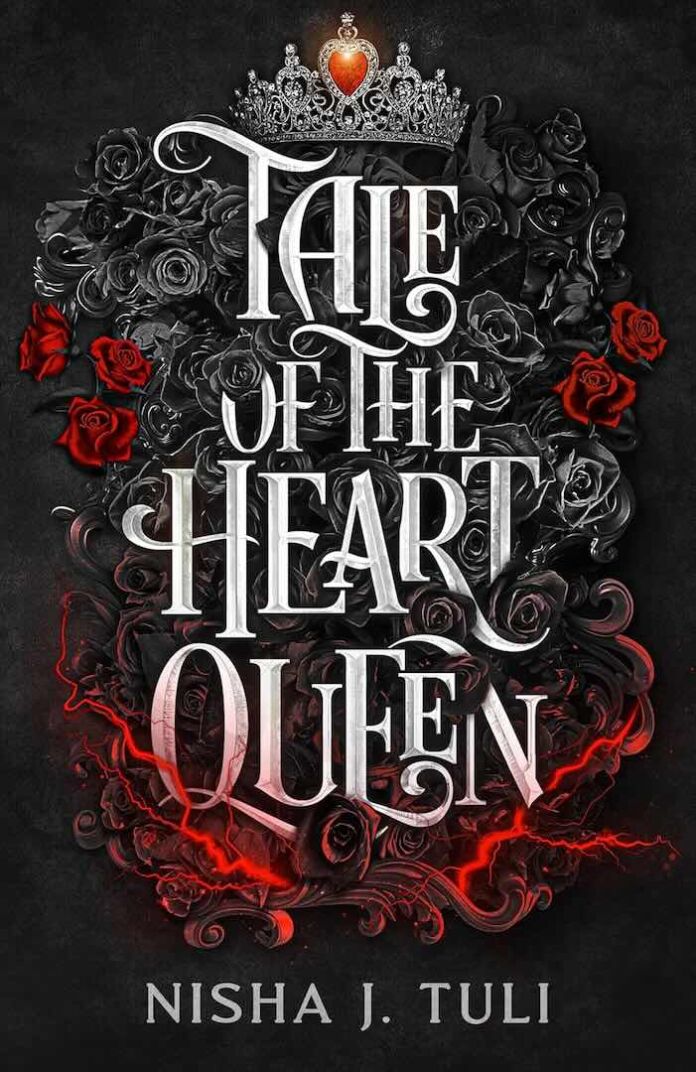Tale of the Heart Queen concludes Nisha J. Tuli’s ambitious fantasy romance quartet that began with Trial of the Sun Queen. Where the first book introduced us to Lor’s fight for survival in the Sun Queen Trials, and the subsequent entries (Rule of the Aurora King and Fate of the Sun King) expanded the political intrigue and romantic tension, this final installment delivers an emotionally charged conclusion that wrestles with questions of destiny, sacrifice, and the true nature of power.
Plot & Narrative Structure
The story opens with devastating impact – Lor accidentally killing Nadir with her newly awakened magic, setting off a chain of events that forces her to confront both the goddess Zerra and the increasingly unstable Aurora King. Tuli masterfully weaves together multiple plot threads:
- The hunt for the remaining arks
- Lor’s desperate mission to save Nadir
- The growing instability threatening Ouranos
- The rebellion in Aphelion
- The truth about the Lord of the Underworld
The pacing maintains consistent momentum, though some readers may find the middle section’s political maneuvering slows the action. However, this deliberate pacing serves to heighten the impact of the book’s explosive final act.
Character Evolution
Lor’s Final Form
Tuli has crafted one of the most compelling character arcs in recent fantasy romance. Lor’s journey from imprisoned survivor to potential savior of Ouranos feels earned through every hard-won step. Her struggle with the darker aspects of her nature—particularly her willingness to steal and destroy to achieve her goals—provides fascinating moral complexity that elevates the story beyond typical chosen one narratives.
Supporting Cast Development
The expanded roles for Willow and Tristan add emotional depth, while the evolution of characters like Gabriel and Tyr demonstrates Tuli’s skill at crafting complex character transformations. The revelation of Anemone’s true identity particularly stands out as a masterful piece of plotting that recontextualizes earlier events.
Romance & Relationships
The central romance between Lor and Nadir reaches new emotional heights, deepened by their separation and the looming sacrifice their bonding demands. Tuli handles the mate bond trope with refreshing nuance, using it to enhance rather than override their emotional connection. Secondary relationships, particularly Willow/Amya and the hints of something between Gabriel/Hylene, provide welcome depth to the supporting cast.
World Building & Mythology
The author excels at revealing the final layers of her intricate world:
- The true nature of the Empyrium and Zerra’s role
- The history of the arks and virulence
- The complex relationship between Imperial magic and the land
- The consequences of the Breaking
These revelations feel natural rather than exposition-heavy, though some readers may wish for more detail about the Empyrium’s ultimate motivations.
Themes & Social Commentary
Tale of the Heart Queen thoughtfully explores:
- The cyclical nature of power and corruption
- The cost of breaking systemic oppression
- The tension between destiny and free will
- Intergenerational trauma and healing
- The price of freedom versus security
The resolution of the low fae rebellion particularly resonates with contemporary discussions about social justice and systemic change.
Writing Style & Technical Elements
Tuli’s prose continues to impress with its blend of lyrical description and sharp dialogue. Her action sequences particularly shine, maintaining clarity while conveying the chaos and emotional weight of each confrontation. However, some readers may find the multiple POV switches in later chapters occasionally disrupt narrative flow.
Areas for Improvement
While largely successful, there are some elements that could be stronger:
- The resolution of certain political plotlines feels rushed
- Some secondary character arcs receive limited closure
- The exact rules governing the Empyrium could be clearer
- A few dramatic revelations might benefit from more setup
Final Verdict
Tale of the Heart Queen delivers a satisfying conclusion to an ambitious series. While not perfect, it successfully balances personal stakes with epic fantasy elements while maintaining emotional authenticity throughout. The ending may prove controversial for some readers, but it feels true to the themes and character arcs established throughout the series.
Recommendations for Similar Works
Fans of the series might enjoy:
- Elise Kova’s Air Awakens series
- Grace Draven’s Phoenix Unbound
- Raven Kennedy’s Plated Prisoner series
These works share similar elements of complex magic systems, political intrigue, and romance that doesn’t sacrifice character development.
Series Impact & Legacy
The Artefacts of Ouranos series stands out in the fantasy romance genre for its:
- Complex exploration of power dynamics
- Nuanced handling of romantic tropes
- Strong character development
- Rich world-building
- Thoughtful integration of social themes
While some elements may divide readers, Tuli has created a memorable addition to the genre that will likely influence future works in the fantasy romance space.





